Kristen Feher
Spatial diversity in molecular organisation regulates T cell receptor and chimeric antigen receptor signalling
University of New South Wales // Sydney, Australia
Q&A Session III // Friday, October 30 // 8.15 am – 9 am (CET)

Protein signalling and their spatial organisation within the plasma membrane are thought to regulate signalling processes, including T cell receptor (TCR) signalling. Single molecule localisation microscopy (SMLM) excels at capturing the spatial distribution of proteins with nanometre accuracy. However, determining which protein distributions are functionally relevant remains elusive. Here, we describe a general method to probe the functional local topologies within heterogenous single molecule localisation patterns. Our method converts a SMLM image of localisations to a topological coordinate system (K-neighbourhood analysis), highlighting the diversity of local topology corresponding to diverse molecular interactions. Standard spatial clustering algorithms are not robust to parameter choice and attenuate spatial diversity by binarizing localisation spatial heterogeneity. In contrast, our method is robust against parameter choice and reveals the nuances of complex spatial organization associated with signalling protein complexes. K-neighbourhood analysis also allows us to compare different cells by pooling information across sets of diverse images and we use it to compare the spatial diversity of TCR organisations with those of chimeric antigen receptors (CARs). We found that the local topology of localisations exists on a continuum and extract nine distinct and interpretable types of co-existing local topologies. We detected nanoclusters which associate with microclusters and organisations that resembled membrane compartments. While CARs occupy the same nine spatial organisations as the TCR, they all have distinctly different compositions of these organisations. We identified the spatial organisations that were preferentially phosphorylated upon antigen binding and show that the same ‘spatial signalling rules’ apply to TCR and CARs undergoing CD3zphosphorylation. However, enhanced expression of first-generation CAR augmented spatial organisations that were deselected for phosphorylation. Taken together, our global and unbiased point pattern analysis demonstrated that the diversity in spatial organisations regulates receptor function.










